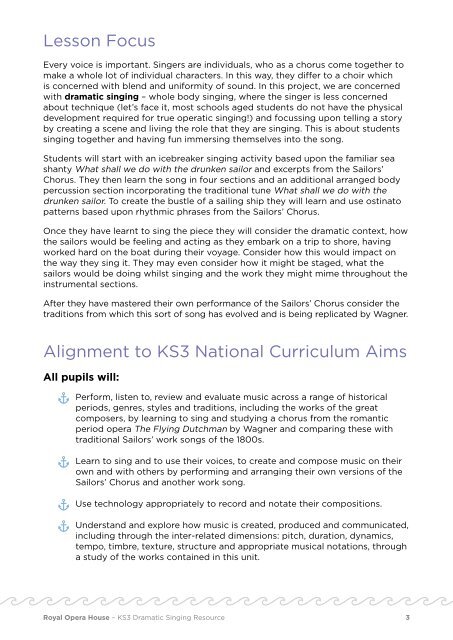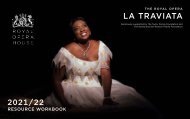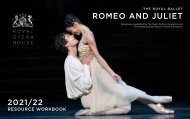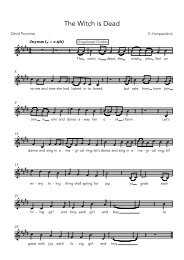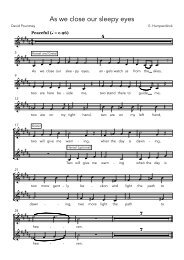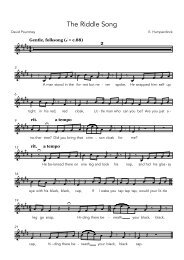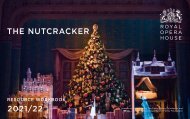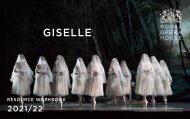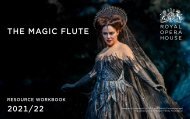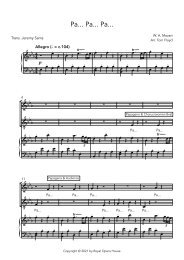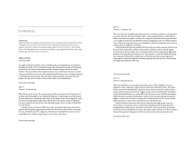The Sailors’ Chorus
Create successful ePaper yourself
Turn your PDF publications into a flip-book with our unique Google optimized e-Paper software.
Lesson Focus<br />
Every voice is important. Singers are individuals, who as a chorus come together to<br />
make a whole lot of individual characters. In this way, they differ to a choir which<br />
is concerned with blend and uniformity of sound. In this project, we are concerned<br />
with dramatic singing – whole body singing, where the singer is less concerned<br />
about technique (let’s face it, most schools aged students do not have the physical<br />
development required for true operatic singing!) and focussing upon telling a story<br />
by creating a scene and living the role that they are singing. This is about students<br />
singing together and having fun immersing themselves into the song.<br />
Students will start with an icebreaker singing activity based upon the familiar sea<br />
shanty What shall we do with the drunken sailor and excerpts from the <strong>Sailors’</strong><br />
<strong>Chorus</strong>. <strong>The</strong>y then learn the song in four sections and an additional arranged body<br />
percussion section incorporating the traditional tune What shall we do with the<br />
drunken sailor. To create the bustle of a sailing ship they will learn and use ostinato<br />
patterns based upon rhythmic phrases from the <strong>Sailors’</strong> <strong>Chorus</strong>.<br />
Once they have learnt to sing the piece they will consider the dramatic context, how<br />
the sailors would be feeling and acting as they embark on a trip to shore, having<br />
worked hard on the boat during their voyage. Consider how this would impact on<br />
the way they sing it. <strong>The</strong>y may even consider how it might be staged, what the<br />
sailors would be doing whilst singing and the work they might mime throughout the<br />
instrumental sections.<br />
After they have mastered their own performance of the <strong>Sailors’</strong> <strong>Chorus</strong> consider the<br />
traditions from which this sort of song has evolved and is being replicated by Wagner.<br />
Alignment to KS3 National Curriculum Aims<br />
All pupils will:<br />
Perform, listen to, review and evaluate music across a range of historical<br />
periods, genres, styles and traditions, including the works of the great<br />
composers, by learning to sing and studying a chorus from the romantic<br />
period opera <strong>The</strong> Flying Dutchman by Wagner and comparing these with<br />
traditional <strong>Sailors’</strong> work songs of the 1800s.<br />
Learn to sing and to use their voices, to create and compose music on their<br />
own and with others by performing and arranging their own versions of the<br />
<strong>Sailors’</strong> <strong>Chorus</strong> and another work song.<br />
Use technology appropriately to record and notate their compositions.<br />
Understand and explore how music is created, produced and communicated,<br />
including through the inter-related dimensions: pitch, duration, dynamics,<br />
tempo, timbre, texture, structure and appropriate musical notations, through<br />
a study of the works contained in this unit.<br />
Royal Opera House – KS3 Dramatic Singing Resource 3


